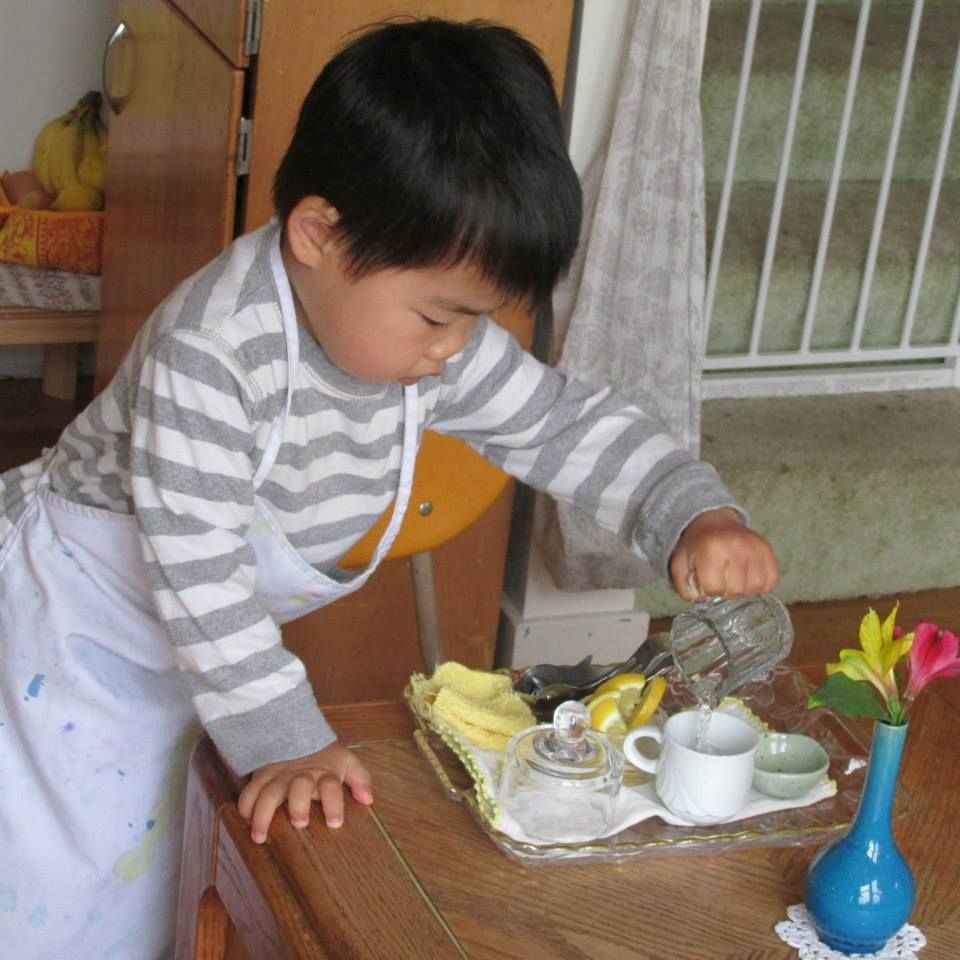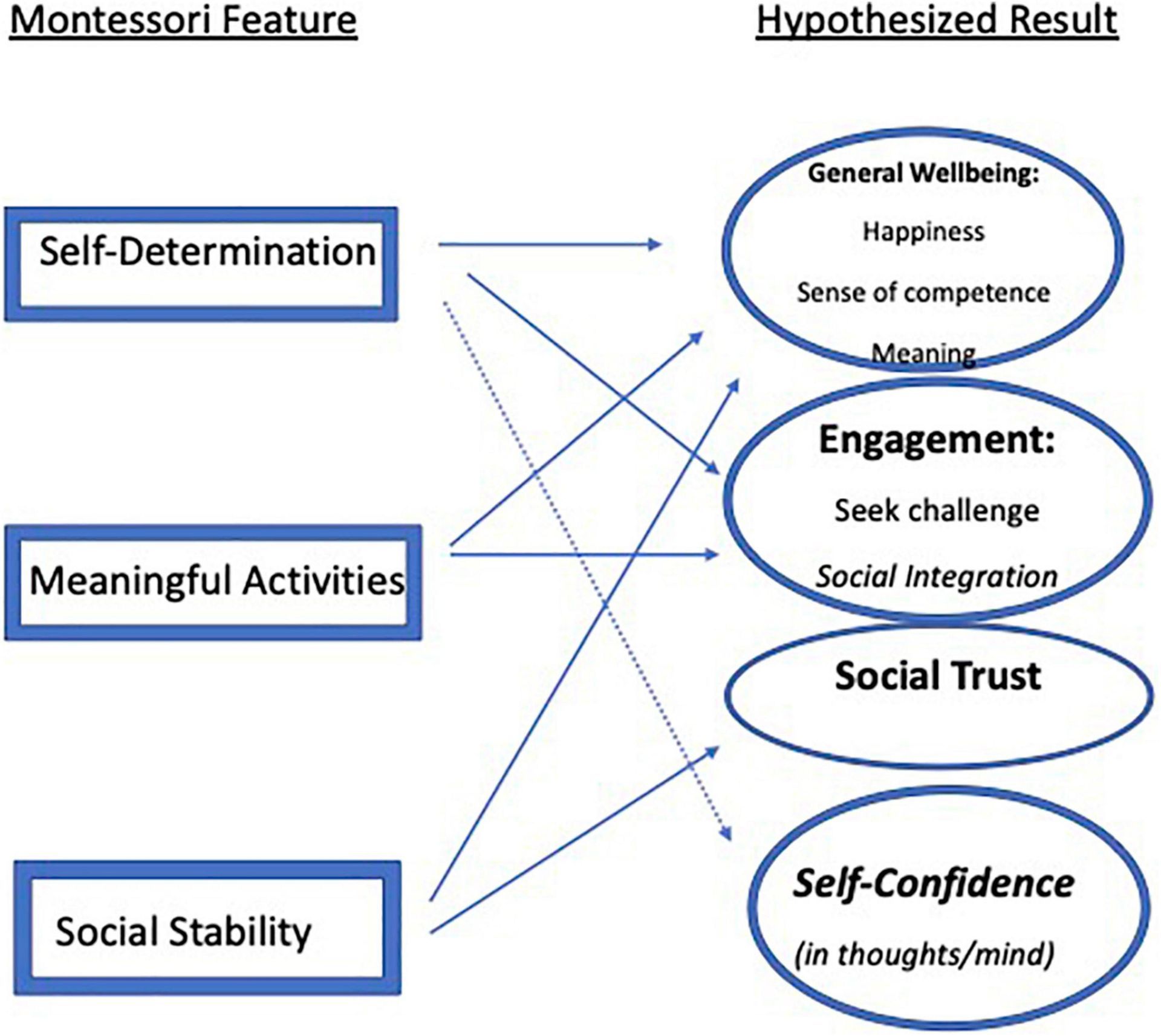
In Montessori theory, freedom and self-discipline are inseparable concepts, functioning as two sides of the same coin. A person who is self-disciplined can responsibly exercise their freedom, and a person who is free must be self-disciplined to use that freedom responsibly. The ultimate goal in Montessori education is to nurture self-disciplined, independent adults who function both autonomously and as responsible members of society.
Freedom and Self-Discipline Across the Four Planes of Development
As children progress through Montessori's Four Planes of Development, their ability to handle freedom and exercise self-discipline evolves. The environment—including the teacher's actions, the social setting of the classroom, and the freedom allowed by the adult—works in harmony to strengthen the child’s will. This development of will is essential in fostering responsible actions.
The ability to make responsible choices is a critical aspect of self-discipline. It is a skill built up over time through consistent practice. Children must be given the opportunity to exercise choice every day to build this skill. Being subject to whims does not lead to true responsibility—responsibility arises when children can make informed, thoughtful decisions based on knowledge and self-discipline.
The Montessori Environment: A Training Ground for Responsible Freedom
In the Montessori classroom, the knowledge necessary for making informed choices comes from both teacher presentations and observation of peers. The ability to choose grows through repeated experiences. Initially, children are given limited choices, and as their ability to choose responsibly increases, so does the variety of options available. This progression towards greater freedom mirrors the strengthening of the child’s will.
The concept of "total freedom" in Montessori is a gradual process. It is achieved through increasingly larger degrees of freedom, matched by the child’s growing ability to act responsibly. This journey toward complete independence is supported by the structured environment, where children reveal their interests and needs through their choices. By observing these preferences, adults can tailor their support—offering appropriate lessons, new experiences, and the right balance of freedom for each child’s stage of development.
Freedom and Responsibility: Limitations that Foster Growth
While Montessori emphasizes freedom, there are necessary limitations. For instance, children are free to use any material that has been demonstrated to them, but they must use it in a way that serves its developmental purpose. For example, the red rods are designed to teach children about length and dimension. Using the longest rod as a pretend horse might be playful, but it undermines the material’s intended lesson and risks damaging the rods. Thus, such use would not be permitted.
Similarly, freedom comes with the responsibility of respecting the rights of others. Children must learn to control their behavior to ensure they do not disturb or harm others. The development of this self-control is nurtured through various means in a Montessori environment.
Building Independence Through the Physical Environment
The physical environment plays a crucial role in developing a child’s independence. A Montessori classroom is calm and aesthetically pleasing, furnished with child-sized, lightweight furniture that encourages independent movement. The materials are carefully curated and arranged to promote order, aiding the development of mental clarity and self-discipline.
The quantity and organization of materials are paramount. Too many materials can overwhelm children, making it difficult to choose and concentrate. Too few materials can lead to boredom, which often results in disruptive behavior. The optimal amount allows children to make meaningful choices, fostering their ability to concentrate and develop order in their minds. As Dr. Montessori said, “Conscious will is a power which develops with use and activity.”
The Role of Independence in Montessori
The environment is designed to support children in functioning independently. For toddlers and primary-aged children, materials are organized on trays, color-coded, or grouped logically, making it easy for them to access what they need. This independence lessens their reliance on adults and boosts their self-confidence.
In the elementary environment, children take on more responsibility for gathering the materials they need for an activity. While the teacher still arranges the materials in an orderly fashion, elementary students are expected to manage their tasks independently, building the foundation for greater autonomy.
Patience: A Crucial Component of Self-Control
In Montessori, many materials are designed for individual use, and often there is only one of each material available. If another child is using it, the child must wait for it to be returned to the shelf. This practice helps children develop patience, which is a critical component of self-control and, ultimately, responsible behavior.
As children progress into the elementary years, collaboration becomes more common, and materials are often used by groups of children working together. Group work helps elementary children engage their logical minds through discussion and cooperation.
The Work Cycle: Time for Development
Montessori environments honor the natural rhythms of children’s concentration, often referred to as the work cycle. A typical work cycle lasts about three hours, allowing ample time for children to immerse themselves in their work. This extended period supports the development of skills, knowledge, and self-discipline.
The Psychological and Emotional Environment
The psychological and emotional climate of a Montessori classroom is equally important. The environment must protect children from unnecessary corrections, rewards, and punishments. Harsh feedback or constant interruptions can damage a child’s developing sense of self. Instead, Montessori materials are designed with built-in controls of error, allowing children to self-correct privately. This process fosters a positive emotional response to learning and promotes feelings of competence and success.
Conclusion: A Balanced Approach to Freedom and Responsibility
In a Montessori environment, freedom and responsibility are intricately linked. Children are given the freedom to make choices within a structured setting, which fosters the development of self-discipline, independence, and responsible behavior. By carefully balancing freedom with limits, the Montessori method supports the growth of children who are capable, self-reliant, and eager to contribute to their community.
The Montessori approach is not just about education; it is a holistic system that nurtures the child’s development in every aspect, from physical and intellectual growth to emotional and social maturity. Through the careful design of the environment and the thoughtful actions of the Guide, children are empowered to reach their full potential—independent, self-disciplined, and responsible.


